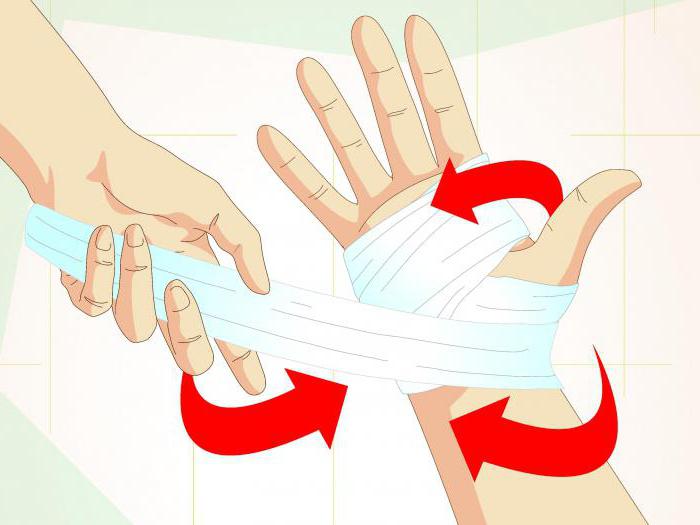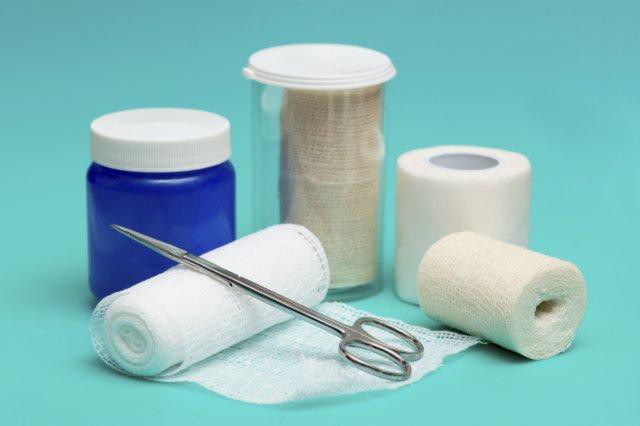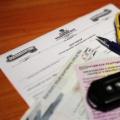Someone may argue that it is easier to buy a ready-made kit. Indeed, at present, the pharmacy assortment includes standard office first-aid kits, moreover, in different configurations. They are quite convenient, but, as a rule, their content requires correction in each specific office, depending on the number of employees, their age and chronic diseases, as well as the specifics of the work.
And the main components to remember are:
- analgesics and antispasmodics. The standard form includes "Analgin", but when choosing the necessary medicines independently, it is often replaced by means with a wider spectrum of action. For example, drugs based on ibuprofen ("Imet", "Nurofen"). They can be used for high temperatures, for toothaches and headaches, for joint pains and dysmenorrhea. As an antispasmodic, a good choice would be "Drotaverin" ("No-shpa"), which perfectly relieves spasms of any internal organs;
- antipyretics. You can limit yourself to the usual packaging of acetylsalicylic acid, or you can complete the first-aid kit with its soluble form, for example, "Upsarin" or effervescent tablets "Aspirin". There are drugs containing a combination of acetylsalicylic and ascorbic acids. Taking them not only lowers the temperature, but also makes the body fight more actively with a cold or a virus. Suitable as an antipyretic and "Paracetamol". It is better if these are lozenges, capsules or tablets, soluble in water (Rapidol, Efferalgan, Panadol);
- dressings. The required number of bandages and the amount of cotton wool will depend on the size of the staff. It is better to opt for sterile dressings and prepare several bandages of different sizes. It is good to have in the first aid kit a set of bactericidal adhesive plasters of different sizes, as well as a coil of ordinary adhesive tape for fixing the dressings. In addition, styptic napkins soaked in a special solution and packed individually are very convenient;
- rubber products. And this is not what you think. Although, if your specifics of work presupposes ... But seriously speaking, those responsible for this part of the office equipment, striving to foresee all possible situations, are not so rare. But in our case we are talking about other products. These are a few par-rubber gloves and a small number of fingertips. Gloves will come in handy in case of assisting in the treatment of wounds and dressing, and fingertips - to isolate small abrasions or cuts on the fingers from water;
- sorbents. Several packages of activated carbon or a package of Sorbex will be indispensable helpers for almost all types of poisoning;
- gastric. It will not be superfluous to have a drug for heartburn in the medicine cabinet. Most of them are available in the form of chewable tablets or sachets with a lowering acidity composition. In addition, let there be a package of an enzyme preparation ("Festal", "Mezim", "Pancreatin"). They perfectly relieve heaviness in the stomach, and may also be in demand during office feasts;
- antidiarrheal. The anti-infective Nifuroxazide will help to cope with this rather delicate and unpleasant problem. And if it is not an infection, but a violation of the regime and diet, or the diarrhea that has arisen has an emotional background, and this also happens, then Loperamide (Imodium, Lopedium) will reduce the frequency of urges and quickly normalize bowel function;
- heart. Even if the team is young, the packaging of Validol, Nitroglycerin and Corvalol will not hurt. By the way, "Corvalol" is more convenient to take in tablet form. In case of an acute condition, the pill can be placed under the tongue. So it will work much faster. If the team has hypertensive patients, then it is imperative to have a drug to stop the attack high blood pressure;
- antihistamines. "Diazolin" or "Suprastin" will prevent severe edema, relieve symptoms of a reaction to insect bites or other types of allergens;
- disinfectants. A package of alcohol wipes, a bottle of hydrogen peroxide and a bottle of iodine solutions and brilliant greens are enough. Do not forget to stock up on cotton swabs for applying these solutions;
- ammonia solution for removal from fainting and respiratory excitement. Its presence is a must for any first aid kit. Remember that in high concentrations, it can, on the contrary, cause a reflex cessation of breathing, so handle it with care. Do not bring the bottle itself to your nose, but only a piece of cotton or a bandage moistened with the solution;
- make sure that the kit also contains a thermometer, a styptic tourniquet, pipettes and scissors.
You can envisage a slightly larger assortment and add healing ointment, throat lozenges, anti-flu teas, or even sanitary pads to the medicine cabinet. However, the office first aid kit should not be too overloaded or contain medications for the treatment of a particular disease. It should be self-essential only for first aid. So, for example, you should not fill it with a mass of various anti-cold remedies. Because a person with a cold should not be in a team at all. Moreover, a doctor's consultation is needed to make a diagnosis and prescribe treatment. The office medicine cabinet may contain drugs that relieve the first acute symptoms, but all other assistance should be qualified and provided by specialists.
An office first aid kit should be located in a place that is clearly visible and easily accessible by any employee of the organization. It would not hurt to add a small guide to the rules of indication emergency care... In addition, a responsible person must be appointed who will monitor the compliance with the expiration dates of the drugs and replenish the kit in a timely manner.
Do not forget that this article is only advisory in nature, and when taking any drugs, you need to take into account their contraindications for a particular patient and take them strictly according to the instructions.
If you think that office workers are not in danger of health problems, then you are wrong. Yes, the work is not dusty, yes, there is no strong physical exertion. But sitting for a long time at the table or at the monitor also leaves an imprint on your well-being. And to this you can add accidents, falls, bruises, minor ailments and other problems and problems. From this we can conclude that the office first-aid kit is not a whim and not a nit-picking of the inspection authorities. It must be available, even if there are only a few people in the team.
First aid kit storage rules
The Labor Code establishes for each employee the right to labor protection. Each employer is responsible for complying with the requirements of the code. That is, the employer is obliged to provide the office staff with the means of providing medical care.
The office first aid kit should be kept in a specific place. All drugs must be labeled or signed. Particular attention is paid to the expiration date of drugs, since an expired drug can aggravate the victim's condition. The office employee responsible for labor protection is responsible for the timely replenishment of spent funds and control of their expiration dates. Remember that the (office) can be checked by supervising employees of the State Labor Inspectorate.

Main document
In March 2011, the Ministry of Health and Social Development of the Russian Federation issued an order "On approval of the requirements for medical purpose first aid kits for providing first aid to workers. "Order number - 169n. According to this document, the number of drugs in the set is established and regulations (GOSTs) on them. An office first-aid kit is compulsorily completed with products registered in the territory of the Russian Federation.
In addition to medical devices, they must also contain pictograms explaining the rules of first aid to unqualified employees.

What should be in the composition
An office first aid kit, the composition of which is regulated according to TU U 24.4-19246991-012-2001, must include:
- a set of necessary means to stop bleeding and bandage the victim in case of injury (these are non-sterile and sterile bandages, cotton wool, a plaster, a tourniquet to stop bleeding);
- antiseptics and disinfectants (brilliant green or iodine, hydrogen peroxide);
- drugs that relieve pain ("Analgin", "Ketanov", "Ibuprofen", "Citromon", "Tempalgin");
- anti-inflammatory drugs ("Streprocid", "Septefril", "Naftizin");
- drugs that lower body temperature ("Paracetomol", "Aspirin");
- antispasmodics ("No-shpa", "Drotaverin", "Spazmalgon");
- cardiological preparations (Validol, Corvalol);
- sedatives (tincture or valerian tablets);
- enterosorbents (activated carbon);
- antimicrobial drugs for the intestines ("Phtalazol", "Levomycitin");
- pressure reducing agents ("Raunatin");
- drugs that improve digestion ("Pancreatin");
- choleretic agent ("Allochol").

The kit should include medical gloves, a thermometer, an artificial respiration device, scissors, a reference book and a list of attachments.
All of the above items should be packed in a soft or hard case. For ease of use, an office first aid kit can be placed in a wall cabinet.
It is important!
In order to properly arrange the presence of a first-aid kit for the inspection authorities, it is necessary to form a small package of documents. First of all, an order should be issued, which will appoint a responsible employee, whose duties include the purchase of an appropriate set of medical devices, their storage and use. The same document approves the composition and the place where the office first aid kit will be located. The order must indicate the order of use and the method of control over the contents of the first-aid kit.
The next stage is the registration of a registration log, which will record the use of drugs and put down marks about their verification and replacement (replenishment). All entries in the journal are made under the signature of the responsible person.
Separately, instructions for the provision of first aid and the phone numbers of the medical center and the emergency call are indicated.
Firstly, the concept of "office worker" is very conditional, and therefore work in the office is not as predictable as it might seem. Secondly, “office workers” can be journalists, managers of all levels down to the bosses, designers, architects, accountants.
This is far from full list... But it is also enough to understand the level of complexity of the profession and the responsibility of the people in these positions. Responsibility is always (or almost always) accompanied by stress of the nervous system, rush jobs,. So draw conclusions about the harmlessness of office work. Do not forget also that people of different ages and psychological types work in the office, and if an unpleasant conversation for one person - say, with a customer - does not bear any consequences, except for correcting the situation, then for another it is fraught with a deterioration in health: increased blood pressure (BP), headache, hypertensive crisis.
All of the above indicates the need for a first aid kit in the office. Of course, it should include medicines and related products, designed not to treat a person, but only to provide him with first aid.
So what do you need to have in a first aid kit?
Headache and colds
First of all - devices for measuring blood pressure (tonometer) and temperature (thermometer). For what? As mentioned above, office workers often suffer from headaches. But before giving a person a medicine, it is necessary to find out the cause of the ailment - at least to measure the temperature and pressure. And only then decide what drugs should be given to him.
So - headacheassociated with increased blood pressure. The first-aid kit should contain valocordin (or corvalol), dibazol (or papazol), no-shpa or some antispasmodic that combines the functions of an analgesic: baralgin, spazmalgon, spazgan. Pay attention to the BP numbers of your colleague, find out if such indicators are typical for him. If the numbers are high enough (130/100), and your colleague says that he is hypertensive, do not rush to refer to the content office first aid kit... It is possible that your employee has “their own” medications prescribed by their doctor. If there are none, convince him of the need to call an ambulance.
If the headache is caused by low blood pressure (90/60 and below), then we can advise the banal citramone - it contains caffeine. Or you can simply give a person strong hot sweet tea and feed him - often the pressure drops against the background of a violation.
In case of a headache caused by a high fever, we advise you to keep soluble aspirin or paracetamol in your medicine cabinet. We do not advise you to treat the sufferer on the spot. It is enough to give him an aspirin and send him home to complete treatment until he has infected the entire office. If you or your colleagues are overwhelmed by a sudden runny nose - use drops of pinosol or similar, and then everyone to the doctor!
By the way, in order to withstand the flu and cold season, it would be nice to put something from immunostimulants in the first-aid kit: cycloferon, echinacea tincture and vitamin C.
For all occasions
What else is good to have on hand? Clerks are people like everyone else, and they get sick in the same way. In case of pain in the heart - and this happens quite often - nitroglycerin, nitrosorbide, or the same Corvalol are required, the rest is the doctor's business.
At the most inopportune moment, either a tooth can - in either case, diclofenac (aka Voltaren in the form of a gel) or ketans will help to hold out for a while. But again, in no case take responsibility for the treatment on yourself! Send a colleague to the doctor.
There are also more unpleasant circumstances: food poisoning or, as the people say, poisoning. They do not appear immediately, but if they have already appeared, one must take emergency measures: activated carbon, Enterosgel in the dosages indicated in the instructions and calling an ambulance will be the best option.
If abdominal pains are associated with chronic diseases, then, again, ask your colleague about his diagnosis and the availability of "your" medicines. If they are not there, then it is quite possible that the sufferer will need festal, panzinorm, ranitidine (or famotidine), as well as maalox.
Not a case of such troubles as cuts or bruises (there is always something piercing and cutting in the office, and there is no need to talk about heavy ones), stock up on plaster, brilliant green or iodine - the latter are best purchased in the form of a pencil: they are stored longer, do not spread and more precisely applied, as well as conventional and elastic bandages... If you put a bruise by dropping a paperweight or a heavy folder on your hand, the Bruise-off ointment will provide you with effective help, but keep in mind that in order to avoid a trace of the bruise, this medicine must be used as soon as possible. If you find ice in your office refrigerator, wrap it in a plastic "file" and a towel on top - and immediately apply it to the bruised area.
To help allergy sufferers
There is one more scourge of our century - allergies. In the office atmosphere, allergens are easy to find: conditioned, unmoistened air, floor and wall coverings contribute to this. Conclusion: there should be an antihistamine in the medicine cabinet: suprastin, claritin, cetrin and others.
But we warn you: if your employee suffers from bronchial asthma, and you suspect that he is having an attack, do not treat him - the case may end badly. Usually such patients always have inhalers with them. Therefore, suggest that he use the medicine, and if it does not help much, call the doctor immediately.
What you need to know
A few words about storing the first aid kit: it should be kept in a dry, well-ventilated place, away from sources of heat and light. Drops, tinctures and solutions are best kept in the refrigerator door. The correct decision would be to appoint a person in charge of the first aid kit, possibly a replaceable one.
We would like to remind you again! The medicines contained in the office medicine cabinet are not intended for treatment, but for first aid! Carefully read the annotation to the drugs and strictly follow the directions, take into account possible side effects and contraindications. Do not exceed the indicated doses! After providing the necessary and sufficient first aid to your colleague, call a doctor with a sense of accomplishment.
Ideal first aid kit for the office
|
Drug name |
number |
Indication for use |
|
1 package, 10 tablets of 20 mg each; |
Vasodilator, normalizes blood pressure, reduces it |
|
|
1 package, 10 tab. |
For headaches, increases blood pressure |
|
|
1% solution in oil in capsules (spherical, red), 0.5 mg in a package of 20 pieces, 2 blisters |
For relief (removal) of angina attacks |
|
|
Tablets, 0.01 g, in a package - 25 pieces, 1 package |
To prevent attacks of angina pectoris; sometimes used for peripheral vascular spasms. |
|
|
Tablets of 0.04 g in a package of 100 pieces, 1 package |
It has a pronounced spasmolytic (relieving spasms) effect. Indications: Spasm of the stomach and intestines, spastic constipation, attacks of cholelithiasis and urolithiasis, angina pectoris, spasm (sharp narrowing of the lumen) of peripheral vessels. |
|
|
Tablets in a contour acheikova packing 10 sh, 1 pack |
Combined analgesic and antispasmodic |
|
|
1 pack of 10 tablets, 1pc\u003e |
Anti-inflammatory agent. Indications: exacerbations of radiculitis, toothache, osteochondrosis, has a strong analgesic effect |
|
|
adsorbent, poisoning, food poisoning |
||
|
enzyme preparation, used for dyspepsia, indigestion | ||
|
antacid drug, used for heartburn, diseases of the stomach and duodenum 12 Elastic bandage bandage |
||
|
Ointment "Bruise-off" |
absorbable ointment |
|
|
Tonometer |
blood pressure monitor |
|
|
Thermometer |
body temperature measuring machine |
Maria Mikheeva
Dosage form
First aid kit for equipping the offices of institutions and organizations of the ARC - "FEST" (office)
Composition
1 Analgin, tab. 0.5 No. 10 2 pack
2 Paracetamol, tab. 0.5 No. 10 1 pack
3 Remantadine, tab. 0.05 No. 10 1 pack
4 Fervex or Colds, powder 1 pack.
5 Faringosept, tab. No. 20 1 pack.
6 Acetylsalicylic acid, tab. 0.5 No. 10 1 pack
7 Hypothermal (cooling) package 2 pcs.
8 Drotaverine hydrochloride, tab. 0.04 # 10 1 pack
9 Suprastin, tab. No. 10 1 pack.
10 Papazol, tab. No. 10 2 pack.
11 Sterile bandage 5 mx 10 cm or 5 mx 7 cm 1 pc.
12 Non-sterile bandage 5 mx 10 cm 1 pc.
13 Non-sterile bandage 5 mx 5 cm 1 pc.
14 Atraumatic antimicrobial napkin 6 x 10 cm No. 1 or 7 x 10 cm No. 1 1 pc.
15 Bactericidal adhesive plaster 1.9 x 7.2 cm 5 pack
16 Sterile hemostatic napkins 6 x 10 cm or 7 x 10 cm No. 3 1 pack.
17 Brilliant green solution 1%, 10 ml 1 fl.
18 Adhesive plaster 1 x 250 cm or 1 x 500 cm or 2 x 500 cm 1 pack
19 Non-sterile cotton wool, 50 g 2 pack
20 Sulfacyl sodium solution 20%, 1 ml No. 2 tube-dropper or 5 ml bottle-dropper 1 pack.
21 Hydrogen peroxide solution 3%, 40 ml 1 fl.
22 Nitroglycerin 1% solution in oil, caps. No. 20 1 pack.
23 Validol, tab. 0.06 # 6 2 pack
24 Ammonia solution 10%, 40 ml 1 fl.
25 Activated carbon, tab. 0.25 No. 10 3 pack
26 Festal, dragee number 10 1 pack.
27 Rennie, tab. No. 12 1 pack.
28 Corvalol, 15 ml 1 fl.
29 Cup for medication 1 pc.
30 Scissors 1 pc.
31 Medical thermometer 1 pc.
32 Non sterile latex gloves 2 pairs
pharmachologic effect
A universal set of medicines for office needs.
For equipping offices of institutions and organizations - for 30 people.
TU 9398-038-10973749-2015
We offer a first aid kit for the office:
Portable - a set of medicines in a plastic case. Compact and lightweight, it just fits in a desk drawer and on a shelf. The main advantages of these products are that a set of medicines and aids can be delivered immediately to the victim, and already on the spot to decide on the choice of one or another medicine. If the office moves, you just need to take your first aid kit with you.
First-aid kits "FEST", designed specifically for offices, will allow you to create a miniature first-aid post directly in the workroom. With their help, you can be ready for almost any emergency situations... Don't be caught off guard!
Selling features
No license
Special conditions
After the expiration date of the funds included in the first aid kit, or their use, the first aid kit must be refilled.
Indications
If you feel unwell, fever, cough, runny nose;
In case of cuts, other injuries;
In case of loss of consciousness;
As a first aid for serious injuries from accidents.




